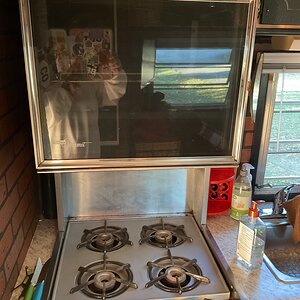- Joined
- Nov 2, 2019
- Messages
- 1,273
- Location
- Fulltiming
- RV Year
- 2022
- RV Make
- Newmar
- RV Model
- London Aire 4551
- RV Length
- 45
- TOW/TOAD
- Yukon Denali
- Fulltimer
- Yes
Looks like I’m a bit late to the game on this one—I had no idea you could use the gray tank to rinse the black tank! I gave it a shot, and it actually works. Now I need to test the dry camping method to see how well that works. My only concern is that once you open the black tank, it will immediately start draining into the hose. Has anyone tried this method yet?














